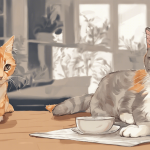Top Strategies for Seamlessly Incorporating Public Art in New Development Projects
Incorporing public art into new development projects is more than just an aesthetic addition; it's a powerful tool for enhancing the social, cultural, and economic fabric of a community. Here’s how you can do it effectively.
Understanding the Importance of Public Art
Public art is not just a decorative element; it plays a crucial role in defining the character and identity of a place. As noted by the Local Initiatives Support Corporation (LISC), "Artistic and cultural activities strengthen a community’s economy, particularly when they reveal and celebrate its character and identity".
In parallel : Transforming Urban Real Estate: A Guide to Incorporating Smart Grid Technologies
Public art can transform neglected spaces into vibrant community hubs, foster a sense of community, and even drive economic growth. For instance, the City of Wichita's Arkansas River Public Art Project aims to enhance the aesthetics, safety, and accessibility of the riverfront, creating unique experiences and spaces for the public.
Building a Multidisciplinary Team
To ensure the success of a public art project, it's essential to assemble a diverse and multidisciplinary team. This team should include:
Also to read : Top Strategies to Optimize Space Efficiency in Small UK Commercial Properties
- Art Consultants: Experts like those from Artelier, who can provide curatorial expertise and navigate the logistical complexities of integrating public art into urban development.
- Architects and Urban Planners: Professionals who can ensure that the public art aligns with the broader urban design and planning goals.
- Local Residents and Community Groups: Involving the community in the planning process helps in creating art that reflects the local culture and meets community needs.
- Project Managers: Individuals who can oversee the entire process from conceptualization to installation.
Here’s a detailed look at what each member brings to the table:
Art Consultants
Art consultants act as intermediaries between artists, planners, architects, and city authorities. They enhance the impact of the development project through thoughtful art, ensuring it aligns with the broader goals of urban regeneration and community engagement.
Architects and Urban Planners
These professionals ensure that the public art is integrated seamlessly into the urban fabric. They consider factors like climate, neighboring buildings, and the historical significance of the site to create a holistic and sustainable design.
Local Residents and Community Groups
Involving the community in the planning process is crucial. For example, the City of Bloomington’s Creative Placemaking Plan includes artist-led community engagement activities to ensure that the public art reflects the community's values and aspirations.
Project Managers
Project managers are responsible for overseeing the entire process, from selecting the artist to managing the installation. They ensure that the project stays on track and meets all the necessary requirements.
Planning Strategically Towards Community-Engaged Public Art
A well-planned strategy is key to the success of any public art project. Here are some steps to follow:
Conduct Community Engagement
Engage with the local community to understand their needs and aspirations. The Bloomington Creative Placemaking Plan, for instance, involves community engagement activities to solicit public input and ensure that the art reflects the community's values.
Analyze the Site
Conduct a thorough site analysis to determine the best location for the public art. Consider factors like foot traffic, visibility, and the overall impact on the surrounding environment.
Select the Right Artist
Organize an open call for artists and establish a transparent selection process. This ensures that the chosen artist is the best fit for the project and can deliver a piece that meets the community's expectations.
Integrating Public Art into Urban Design
Public art can be more than just a standalone piece; it can be an integral part of the urban design. Here are some ways to achieve this:
Functional Art
Public art can serve functional purposes while also contributing to the aesthetic value of the space. For example, the Arkansas River Public Art Project includes artworks that provide shade or conceal electrical systems, enhancing both functionality and visual appeal.
Vertical Gardens and Street Art
Incorporating vertical gardens or street art can add a dynamic element to urban spaces. These elements not only beautify the area but also contribute to sustainability and community engagement.
Celebrating Cultural Heritage
Public art can celebrate the cultural identity of a place. The LISC’s creative placemaking initiatives, for instance, support projects that reflect the unique character and cultural heritage of a community.
Ensuring Sustainability and Community Engagement
Sustainability and community engagement are critical components of any successful public art project.
Sustainability
Ensure that the public art is durable, safe, and low maintenance. The Arkansas River Public Art Project, for example, requires artworks to be durable and safe, ensuring they can withstand the elements and heavy use.
Community Engagement
Public art should foster a sense of community and place. The Bloomington Creative Placemaking Plan aims to leverage creativity and art to promote social, cultural, and economic activity, creating a connected and welcoming community.
Examples of Successful Public Art Projects
Here are a few examples of how public art has been successfully incorporated into development projects:
South LA’s Crenshaw Boulevard Revitalization
LISC organized $30 million to revitalize the historic Crenshaw Boulevard business and cultural corridor. This project included creative placemaking initiatives that transformed the area into a vibrant community hub.
Wichita’s Arkansas River Public Art Project
This project involves the creation of site-specific, permanent public art installations along the Arkansas Riverfront. The artworks are designed to enhance the aesthetics, safety, and accessibility of the area, creating unique experiences for visitors.
Bloomington’s Creative Placemaking Plan
The City of Bloomington is developing a comprehensive creative placemaking plan that involves artist-led community engagement activities. This plan aims to promote social, cultural, and economic activity, creating a connected and welcoming community.
Practical Insights and Actionable Advice
Here are some practical tips for incorporating public art into your development projects:
Create a Comprehensive Plan
Develop a plan that explores community involvement, site analysis, and the selection of the best location. This plan should factor in climate, neighboring buildings, and the historical significance of the site.
Involve the Community
Engage with the local community to understand their needs and aspirations. This ensures that the public art reflects the community's values and aspirations.
Collaborate with Experts
Work with art consultants, architects, and urban planners to ensure that the public art is integrated seamlessly into the urban fabric.
Ensure Sustainability
Make sure the public art is durable, safe, and low maintenance to ensure it stands the test of time.
Incorporating public art into new development projects is a powerful way to enhance the social, cultural, and economic fabric of a community. By building a multidisciplinary team, planning strategically, integrating public art into urban design, and ensuring sustainability and community engagement, you can create vibrant and meaningful public spaces.
As Forecast Public Art notes in their work with the City of Bloomington, "Public art is a crucial tool for building successful and sustainable communities. This strategy emphasizes community involvement in shaping the environment, facing issues, facilitating positive change, and promoting inclusivity".
By following these strategies and involving the community in the process, you can create public art that not only beautifies the space but also celebrates the local culture and contributes to the overall well-being of the community.
Table: Key Strategies for Incorporating Public Art
| Strategy | Description | Example |
|---|---|---|
| Build a Multidisciplinary Team | Include art consultants, architects, urban planners, and local residents. | LISC’s creative placemaking initiatives |
| Plan Strategically | Conduct community engagement, site analysis, and select the right artist. | Bloomington’s Creative Placemaking Plan |
| Integrate into Urban Design | Use functional art, vertical gardens, and street art. | Arkansas River Public Art Project |
| Ensure Sustainability | Ensure artworks are durable, safe, and low maintenance. | Wichita’s Arkansas River Public Art Project |
| Foster Community Engagement | Engage with the local community to reflect their values and aspirations. | South LA’s Crenshaw Boulevard Revitalization |
Detailed Bullet Point List: Benefits of Public Art
- Enhances Aesthetics and Character: Public art can transform neglected spaces into vibrant community hubs, enhancing the overall aesthetics and character of the area.
- Fosters Community and Place: Public art can foster a sense of community and place, creating unique and memorable experiences for visitors.
- Promotes Social, Cultural, and Economic Activity: Public art can leverage creativity to promote social, cultural, and economic activity, contributing to a connected and welcoming community.
- Improves Accessibility and Legibility: Public art can enhance accessibility and legibility, maintaining local distinctiveness and promoting community pride.
- Celebrates Heritage, Biodiversity, and Culture: Public art can celebrate the cultural identity of a place, creating opportunities to explore local culture and make public spaces distinctive and memorable.
- Empowers Local People and Communities: Public art involves community involvement in shaping the environment, facilitating positive change, and promoting inclusivity.
Quotes
- "Artistic and cultural activities strengthen a community’s economy, particularly when they reveal and celebrate its character and identity." – LISC
- "Public art is a crucial tool for building successful and sustainable communities. This strategy emphasizes community involvement in shaping the environment, facing issues, facilitating positive change, and promoting inclusivity." – Forecast Public Art
- "Public art encourages high-quality design and environmental standards, responding to the practical and creative needs of a place." – Artelier











